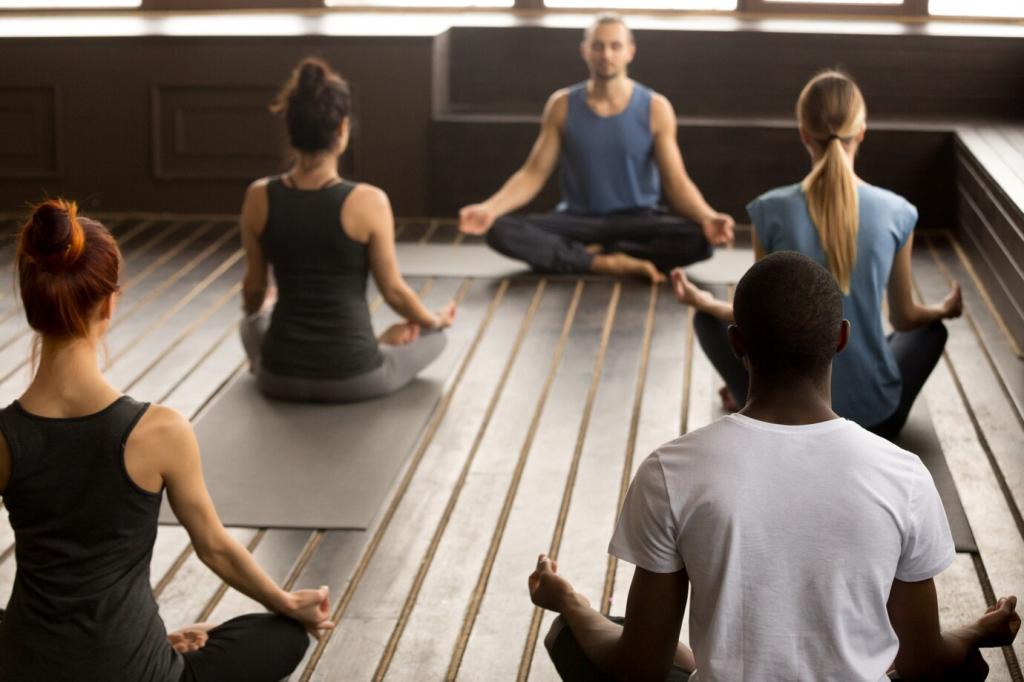
Progressive Muscle Relaxation in Meditation: Unclench, Unwind, Uncover Calm
Chosen theme: Progressive Muscle Relaxation in Meditation. Settle in, breathe softly, and meet a grounded practice that teaches your body how to let go, one small muscle at a time. Stay with us, share your reflections, and subscribe for fresh guidance on building a compassionate, embodied meditation routine.
What Progressive Muscle Relaxation Brings to Meditation
In the 1920s, physician Edmund Jacobson pioneered Progressive Muscle Relaxation to reduce tension through awareness. Today, meditators adapt his method to cultivate presence, linking physical release with attentive breathing and kind curiosity toward the body’s subtle messages.
What Progressive Muscle Relaxation Brings to Meditation
Brief, controlled tension heightens proprioceptive signals, making the ensuing release more vivid and teachable. Your nervous system notices contrast, learns safety through softening, and gradually associates mindful attention with a reliable, repeatable sense of ease throughout the body.

Preparing Your Space and Posture
Dim the lights, silence notifications, and choose a comfortable seat or reclined position with neck support. Let your breath be effortless. Remind yourself to avoid pain, adjust intensity for sensitive areas, and welcome pauses whenever your body requests a gentler pace.
The 16-Group Flow, Softly Executed
Move gradually: hands, forearms, upper arms, face, jaw, neck, shoulders, chest, back, abdomen, glutes, thighs, hamstrings, calves, feet. Gently contract for five seconds, then release for ten. If pain or strain appears, skip that group and visualize ease instead.
Closing the Practice and Journaling
After the final release, rest in stillness and sense residual warmth or tingling. Note three sensations and one emotion in a journal. Share your discoveries in the comments, and subscribe for guided audio cues that harmonize breath counts with each muscle group cycle.
Science of Soften: How PMR Calms the Nervous System
PMR can enhance parasympathetic tone, reflected in steadier breathing and improved heart rate variability. As tense muscles relax, baroreceptors and vagal pathways signal safety, easing rumination and inviting the mind to settle naturally without force or strenuous concentration.
Breath as a Gentle Metronome
Inhale to prepare, exhale to softly contract, then take a longer, unhurried inhale as you release into spaciousness. Let your breath cues be friendly reminders, not strict rules, so your body learns comfort with every mindful cycle of tension and easing.
Choosing the Right Tempo
If you feel rushed, extend release phases. If you feel sluggish, shorten contraction time slightly. The ideal tempo leaves you aware, not depleted. Check in every few groups, and tell us which pacing helped you most so others can experiment confidently.
Staying Present Without Perfection
Wandering thoughts are natural. Label them gently, return to sensation, and celebrate each small return. Presence grows through repetition, kindness, and curiosity. If you miss a group, simply continue; there is no failing in practice, only learning and honest noticing.
Under your desk, lightly contract toes, calves, and thighs while breathing quietly. Roll shoulders subtly, soften jaw tension, and release your brow. Two minutes can reset your baseline. Share your favorite stealth moves in the comments to inspire fellow readers today.
Adapting PMR for Real Life
In bed, use half-intensity contractions with longer releases, inviting heaviness into the mattress. Keep lights low, screens away, and count your out-breaths. Many readers report drifting off mid-practice; if that is you, celebrate it and let rest arrive naturally tonight.
Adapting PMR for Real Life
Common Mistakes and Gentle Fixes
Excess force can trigger guarding and strain. Aim for about fifty percent effort, keep the jaw unclenched, and let exhales be longer. If dizziness appears, pause, breathe comfortably, and resume when steady. Tell us how reducing intensity changed your experience this week.

Before the Recital
Maya’s right hand buzzed before difficult arpeggios, fingers locking at rehearsals. Ten minutes backstage, she cycled gentle contractions through forearms and jaw, noticing every release as breath folded her back into the seat, the hall’s murmur softening into something kind.
The Turning Point
Onstage, she felt a familiar surge of tension. Instead of panicking, she softened shoulders on an exhale and recalled the forearm release. The arpeggios flowed cleaner than in practice, each phrase riding the memory of letting go rather than fighting fear directly.


Join the Practice: Your Voice Matters
Which muscle group will you emphasize tomorrow, and why? Describe your plan and what you hope to notice. Your experiment might spark another reader’s breakthrough, turning small adjustments into a shared library of practical, compassionate ideas for everyday calm.
Join the Practice: Your Voice Matters
Want weekly audio walkthroughs synchronized with breath counts and gentle cues? Subscribe and receive fresh PMR meditations, plus printable checklists and reflection prompts that keep momentum steady while honoring your body’s signals, capacities, and evolving needs across busy seasons.
